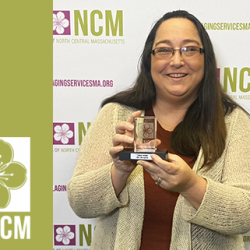How Does the Heart Work?
Your heart is a strong muscle that pumps blood to your body. A normal, healthy adult heart is about the size of your clenched fist. Just like an engine makes a car go, the heart keeps your body running. The heart has two sides, each with a top chamber (atrium) and a bottom chamber (ventricle). The right side pumps blood to the lungs to pick up oxygen. The left side receives blood rich with oxygen from the lungs and pumps it through arteries throughout the body. An electrical system in the heart controls the heart rate (heartbeat or pulse) and coordinates the contraction of the heart’s top and bottom chambers.
How Your Heart Changes with Age
People age 65 and older are much more likely than younger people to suffer a heart attack, to have a stroke, or to develop coronary heart disease (commonly called heart disease) and heart failure. Heart disease is also a major cause of disability, limiting the activity and eroding the quality of life of millions of older people.
Aging can cause changes in the heart and blood vessels. For example, as you get older, your heart can’t beat as fast during physical activity or times of stress as it did when you were younger. However, the number of heartbeats per minute (heart rate) at rest does not change significantly with normal aging.
Changes that happen with age may increase a person’s risk of heart disease. A major cause of heart disease is the buildup of fatty deposits in the walls of arteries over many years. The good news is there are things you can do to delay, lower, or possibly avoid or reverse your risk.
The most common aging change is increased stiffness of the large arteries, called arteriosclerosis (ahr-teer-ee-o-skluh-roh-sis), or hardening of the arteries. This causes high blood pressure, or hypertension, which becomes more common as we age.
High blood pressure and other risk factors, including advancing age, increase the risk of developing atherosclerosis (ath-uh-roh-skluh-roh-sis). Because there are several modifiable risk factors for atherosclerosis, it is not necessarily a normal part of aging. Plaque builds up inside the walls of your arteries and, over time, hardens and narrows your arteries, which limits the flow of oxygen-rich blood to your organs and other parts of your body. Oxygen and blood nutrients are supplied to the heart muscle through the coronary arteries. Heart disease develops when plaque builds up in the coronary arteries, reducing blood flow to your heart muscle. Over time, the heart muscle can become weakened and/or damaged, resulting in heart failure. Heart damage can be caused by heart attacks, long-standing hypertension and diabetes, and chronic heavy alcohol use.
Check Your Blood Pressure
As you get older, it’s important for you to have your blood pressure checked regularly, even if you are healthy. This is because aging changes in your arteries can lead to hypertension. You may feel fine but, if not treated, high blood pressure could lead to stroke and problems with your heart, eyes, brain, and kidneys. To manage high blood pressure, exercise, dietary changes, and reducing your salt intake can help, but as aging changes in the arteries often cause high blood pressure in older age, medication is often necessary. It is not uncommon to need more than one medication to control your blood pressure.
What Can I Do to Prevent Heart Disease?
There are many steps you can take to keep your heart healthy.
Try to be more physically active. Talk with your doctor about the type of activities that would be best for you. If possible, aim to get at least 150 minutes of physical activity each week. Every day is best. It doesn’t have to be done all at once.

Start by doing activities you enjoy—brisk walking, dancing, bowling, bicycling, or gardening, for example. Avoid spending hours every day sitting.
If you smoke, quit. Smoking is the leading cause of preventable death. Smoking adds to the damage to artery walls. It’s never too late to get some benefit from quitting smoking. Quitting, even in later life, can lower your risk of heart disease, stroke, and cancer over time.
Follow a heart-healthy diet. Choose foods that are low in saturated fats, added sugars, and salt. As we get older, we become more sensitive to salt, which can cause swelling in the legs and feet. Eat plenty of fruits, vegetables, and foods high in fiber, like those made from whole grains. Get more information on healthy eating from NIA. You also can find information on the Dietary Approaches to Stop Hypertension (DASH) eating plan and the U.S. Department of Agriculture’s Food Patterns.
Keep a healthy weight. Balancing the calories you eat and drink with the calories burned by being physically active helps to maintain a healthy weight. Some ways you can maintain a healthy weight include limiting portion size and being physically active. Learn more about how to maintain a healthy weight from NIA.
Keep your diabetes, high blood pressure, and/or high cholesterol under control. Follow your doctor’s advice to manage these conditions, and take medications as directed.
Don’t drink a lot of alcohol. Men should not have more than two drinks a day and women only one. One drink is equal to:
- One 12-ounce can or bottle of regular beer, ale, or wine cooler
- One 8- or 9-ounce can or bottle of malt liquor
- One 5-ounce glass of red or white wine
- One 1.5-ounce shot glass of distilled spirits like gin, rum, tequila, vodka, or whiskey
Manage stress. Learn how to manage stress, relax, and cope with problems to improve physical and emotional health. Consider activities such as a stress management program, meditation, physical activity, and talking things out with friends or family. To learn more about stress management techniques, visit the National Center for Complementary and Integrative Health.





